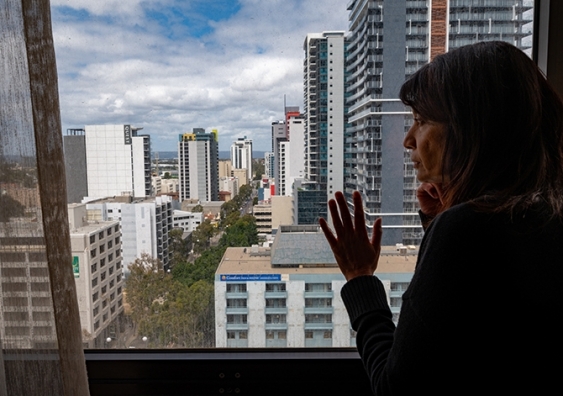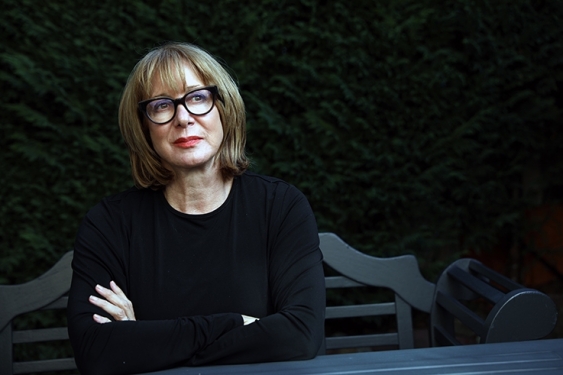Quarantine quandary: the case for building dedicated facilities
The Federal government has just announced it will help fund the building of a quarantine facility in Victoria; meanwhile UNSW academics wonder why it has taken this long.
The Federal government has just announced it will help fund the building of a quarantine facility in Victoria; meanwhile UNSW academics wonder why it has taken this long.

Australian governments need to bite the bullet and construct purpose-built COVID-19 quarantine facilities in each state regardless of the nation’s progress with vaccinations, a leading epidemiologist at UNSW Sydney argues.
And a UNSW expert in built environment says the buildings could be constructed relatively quickly and cheaply as modular structures using prefabricated components.
In the wake of yesterday’s announcement by the Federal government to help fund the building of a dedicated quarantine centre in Victoria, UNSW epidemiologist, Professor Mary-Louise McLaws, says the move is central to the containment of breaches of COVID-19 into the community.
“Until we have purpose-built quarantine centres built in each capital city, I would urge the authorities in the meantime to develop national best practice across all states and territories,” says Prof. McLaws, an adviser to the World Health Organisation Infection Prevention and Control for COVID-19.
“This should start with tightening up those weaknesses in the current system that can be improved immediately with the vaccination of all hotel quarantine staff and all their households.
“And an urgent area for improvement is identifying the best facilities for returned travellers – hotels with superior air changes and windows that open – and by placing guests on one side of the corridor with a vacant room in between, while relocating all guests from a single room as soon as one of their group tests positive.”
The real problem is not simply that hotels have become proxies for hospitals, but that they do not meet hospital standards for dealing with highly infectious diseases.
“An average-size infectious ward must have at least 10 full clean air changes per hour per person and that ward must not act as a positive air pressure room when doors are open,” Prof. McLaws says.
“So a hotel room that does not meet the air change per hour per person increases the chances of opportunistic aerosol spread.”
The solution is to design and construct purpose-built quarantine facilities that maximise ventilation while minimising chances of returning travellers from infecting other travellers or staff and to augment this with frequent testing.
“Ideally these buildings would be single-storey with natural airflow and separate buildings for travellers who test positive to the virus, while the current hotel rooms should be equipped with air-conditioners that can meet 10 air changes per hour per person,” Prof. McLaws says.

Professor Mary-Louise McLaws says lower rates of air change in hotel rooms increase the chances of COVID-19 viral spread. Photo: UNSW
The quarantine facilities in Darwin’s Howard Springs are a rare quarantining success story and are now being lauded as the “gold standard” in COVID-19 quarantining of returned travellers. While they do fit the design brief that Prof. McLaws and others are suggesting for proper quarantine facilities, the precinct only houses a maximum of 2000 people per fortnight.
And with reportedly around 36,000 Australians still wanting to come home, Prof. McLaws wonders why federal and state governments haven’t taken the initiative to construct purpose-built quarantine facilities earlier.
“We’ve had a year of outbreaks in the community accounting for 21,000 cases directly and indirectly caused by breaches in our hotel quarantine system.
“The cost of a lockdown in NSW and Victoria is $1 billion a week. In Victoria it was estimated that they could make a purpose-built quarantine centre with 3000 beds for $700 million. And now they’re in their fourth lockdown, this time because of the failings of hotel quarantine in another state. That is why it’s so important that all states make custom-built quarantine systems a priority.”
UNSW colleague Dr Ahmed WA Hammad is an expert on construction systems and methods in the Faculty of Arts, Design and Architecture. He shares the view of Prof. McLaws that lack of time and too much expense are not compelling reasons not to build dedicated quarantine facilities.
He says modular buildings, fabricated off-site away from the construction zone, would be the most effective way to build quarantine facilities that meet health and logistical requirements.
“Using modular designs is very similar to building with Lego, where the ready-built units are stacked together to form your buildings,” Dr Hammad says.
“Modular construction is safe, proven to be more sustainable, and is quicker to build than your traditional construction method.
“For quarantine facilities we’re looking at two options: adaptable facilities that are more permanent and can be used for some other purpose once the pandemic issue is resolved, or temporary quarantine facilities that can be built super-quickly and dismantled after the pandemic.
“These temporary quarantine facilities can even be made mobile so that they can be sent to various locations depending on need.”
He says construction speed would depend on building size and requirements.
“If you wanted to build 50 rooms suitable for the purposes of quarantining, you are looking at three to 10 weeks, depending on several factors like quality level desired, level of adaptability of the space for after the pandemic, and the availability of materials and resources.
“Needless to say, if we’d started building a few months into the pandemic last year, we would probably have ‘gold standard’ quarantine facilities in each major city, not just Darwin.”

Dr Ahmed Hammad says using modular designs of quarantine facilities would enable them to be built quickly and therefore at lower cost. Photo: UNSW
Dr Hammad says it makes sense to have centrally located facilities in each major city rather than multiple facilities spread out. Noting that the proposed site for the quarantine hub in Victoria is close to Avalon Airport, he says this is key to ensuring effective monitoring and efficient use of security personnel.
“Locating these centrally in our capital cities would be very effective if we had limited availability of personnel to control access to these facilities. If the government were to allow travellers to return only via a limited number of cities, it would also be easier to plan and administer.”
On the question of cost, it’s not unlike the question of how long is a piece of string – it all depends on what your minimum requirements are.
“But one thing is for sure, modular construction is more time effective than traditional building methods, helping reduce overall costs,” Dr Hammad says.
“On average, a high quality 60m2 granny flat made from modular construction would cost roughly $60,000 – $120,000.
“But when you have economies of scale – in other words, making structures that can accommodate hundreds, or even thousands of returned travellers – these costs will definitely go down.”
Dr Hammad says cost effectiveness can also be built in by playing the long game – making the structures adaptable to other uses if and when the pandemic comes to an end.
“If the facilities to be constructed in Melbourne are permanent, what will the purpose of these facilities be after the pandemic slows down?” he asks. “This will obviously be a critical question faced by other states also considering this option.”
“The sites need to be designed so that once the pandemic is over, the spaces can be reconfigured and adopted as learning spaces, social housing, hospitals, schools, libraries or even office space.
“The key, of course, is in the design of the modular units; walls need to be designed so that after the pandemic, they can be easily moved. Services, such as plumbing and electrical connections, should not be shared, so their configuration can be changed without altering adjacent dwellings.”
Prof. McLaws says a long-term view of how and why these facilities are built is essential.
“These quarantine facilities will be used long after the last person in Australia has been fully vaccinated. This will not be our last pandemic and in the meantime these facilities could be used to house newly arrived refugees and many other purposes.”